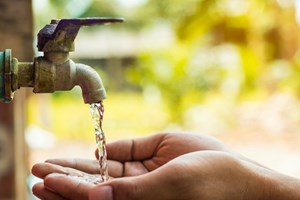Clarksburg Makes $416K Available to Address Lead Water Lines
(AP) — The Clarksburg Water Board in West Virginia has made $416,000 available in its budget to address lead found in some customers’ household drinking water.
The board won’t make capital purchases this year and postponed buying items including lab equipment and three trucks, The Exponent Telegram reported.
“These items are needed. Otherwise, they wouldn’t be in the budget,” Jason Myers, the board’s general manager, said at a meeting on Tuesday. “However, with public health in mind ... we’re willing to forgo this.”
The West Virginia Department of Health and Human Resources said funds are available to help with the problem but asked the board to outline how much of its own money could be used, according to Myers.
On top of available aid from the health department and the Environmental Protection Agency, the board plans to request funding from the West Virginia Infrastructure and Jobs Development Council. The region’s planning and development council is also helping to find funding sources.
“The tough spot is, it’s an unliquidated liability. We don’t know what the bottom line is,” water board attorney Tim Stranko said. “We know we need some help — we just don’t know how much. So that’s the other part of the conversation.”
Of the 120 water samples collected for lead testing that were returned as of Tuesday afternoon, only one was above an allowable limit set by the EPA.
The lead issue was discovered when drinking water samples were collected from the homes of three children diagnosed with elevated blood lead levels. The toxic metal can be particularly harmful to children. Multiple sources of exposure were identified, so the water couldn’t have been the sole cause of the higher levels.
Earlier this month, the state health department said the water board failed to notify the public about the risk of exposure in drinking water.
Myers said the lead wasn’t found at the water treatment center or in the main line of the system. It’s in older service lines that connect a main line to a customer’s meter, or in lines that run from a meter to a home.
Between 9.7 million and 12.8 million lead pipes in the U.S. — including about 20,000 in West Virginia — run water to people’s homes, according to the Natural Resources Defense Council. Lead service lines were phased out in the 1950s and formally banned in 1988.
Related News
From Archive

- Glenfarne Alaska LNG targets late-2026 construction start for 807-mile pipeline project
- U.S. water reuse boom to fuel $47 billion in infrastructure spending through 2035
- $2.3 billion approved to construct 236-mile Texas-to-Gulf gas pipeline
- Major water pipe break in Puerto Rico hits over 165,000 customers
- Potomac River Tunnel project enters construction phase beneath Washington, D.C.
- Pennsylvania American Water launches interactive map to identify, replace lead water service lines
- Trump's tariffs drive $33 million cost increase for Cincinnati sewer project
- Utah city launches historic $70 million tunnel project using box jacking under active rail line
- Tulsa residents warned after sewer lines damaged by boring work
- Fatal trench collapse halts sewer construction in Massachusetts; two workers hospitalized




Comments